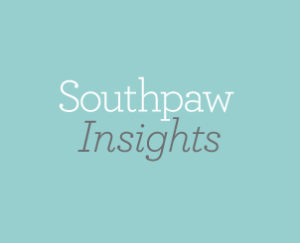 On the heels of International Women’s Month (that’s March), Jessica Broome Research recently got certified as a woman-owned business by the Women’s Business Enterprise National Council, and I also joined The Wing, a women-only coworking space/ social club in New York. All this “ladies first”-ness has gotten me thinking about how doing research among women may be unique.
On the heels of International Women’s Month (that’s March), Jessica Broome Research recently got certified as a woman-owned business by the Women’s Business Enterprise National Council, and I also joined The Wing, a women-only coworking space/ social club in New York. All this “ladies first”-ness has gotten me thinking about how doing research among women may be unique.
A blog I really like had a piece a while back about differences in men’s and women’s brains that may impact how they interact with research, and my friend Nicole at Sloe Gin Fizz had fun illustrating these ideas for you…
Processing: Women have less gray matter than men. This is the stuff that controls our ability to focus– and means women might find it easier to multi-task or switch between tasks than men. In survey design, this means being aware of transitions between topics or question types — they might be harder for men!
Chemistry: Women have more estrogen, men have more testosterone. Different levels of these hormones mean that in general, women tend to be more subjectively driven while men are more objectively driven. Women prefer to give open ended responses to explain their opinions, while men are more inclined to give ratings and might need a little more coaxing.
Structure: Women have smaller parietal lobes but larger hippocampuses. (I’d never heard those words before I started writing this). Their larger parietal lobes mean better spatial perception, so men might prefer to rate images rather than text. Women’s larger hippocampus, combined with a bigger prefrontal cortex, makes us better at remembering and recalling experiences based on our senses– and might mean that it’s easier for us to give more detailed responses to recall questions.
So there you have it — a few things to keep in mind, and some fun animal drawings to start your Monday off right!



